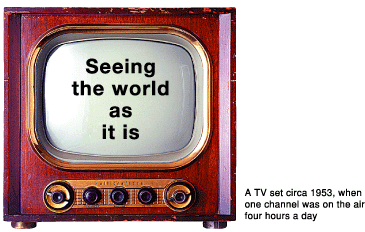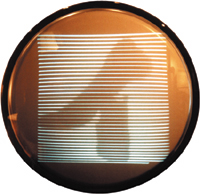|
Roots in the Showa era
In 1876, Alexander Graham Bell of the United
States discovered how to transmit and reproduce the human voice using
electrical pulses, leading to the development of the first telephone.
The following year, Thomas Edison invented the gramophone, the first
voice-recording device. Then, in 1895, an Italian, Guglielmo Marconi,
invented the wireless telegraph. The first transmission of a human voice
was made on Christmas Eve, 1906, from a suburb of Boston in the United
States.
Only 14 years later, in 1920, the world's
first radio station, KDKA, went on the air in another American city,
Pittsburgh.
Radio broadcasting in Japan was launched
on March 22, 1925, two years after the Great Kanto Earthquake. On Christmas
Day of the following year, Takayanagi Kenjiro succeeded in displaying
the first character of the Iroha syllabary using a cathode ray tube.
It was the very day that the Emperor Taisho passed away, so the era
of television in Japan commenced with the reign of his successor, the
Emperor Showa.
|
|

| The choice of |
 |
 What
was chosen as the very first TV picture? In other countries, scientists
selected a cross or some other sacred image. In Japan, however, it was
a Japanese character: What
was chosen as the very first TV picture? In other countries, scientists
selected a cross or some other sacred image. In Japan, however, it was
a Japanese character:  (pronounced
like the "ee" in "screen"). (pronounced
like the "ee" in "screen").
 is the first
character of the traditional Iroha syllabary and thus signifies a beginning.
The first televised ÉC marked the beginning of a new information
trans- mission culture. is the first
character of the traditional Iroha syllabary and thus signifies a beginning.
The first televised ÉC marked the beginning of a new information
trans- mission culture.
|


